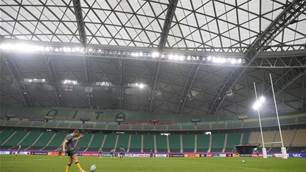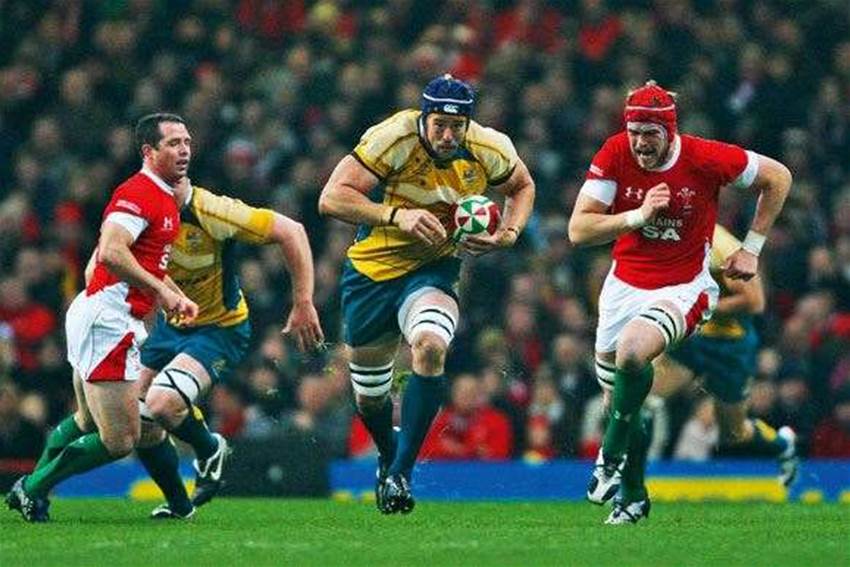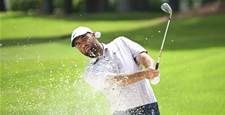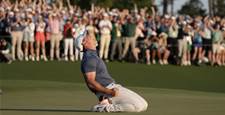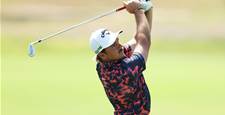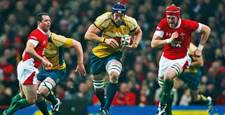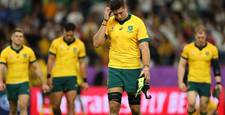Mark Chisholm was certain 2008 would be his year. He was big, fit and strong. He’d served his four-year Wallaby apprenticeship. Yes, 2008 was his time. But it wasn’t.
Mark Chisholm was certain 2008 would be his year. He was big, fit and strong. He’d served his four-year Wallaby apprenticeship. Yes, 2008 was his time. But it wasn’t.
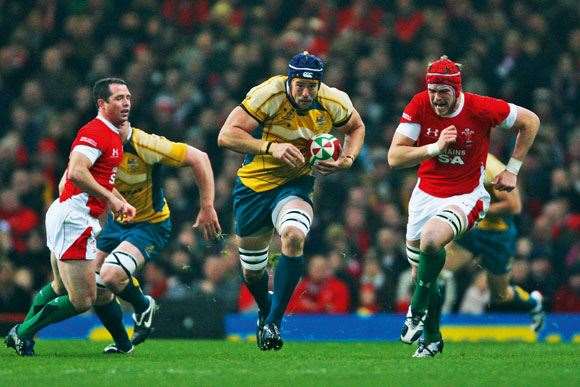 A 70m try was the result of this Chisholm burst against Wales last year.
A 70m try was the result of this Chisholm burst against Wales last year.Images: Stefan Postles
Queensland lock James Horwill got the nod from Robbie Deans and Chisholm was shunted back to the Australia A team. He watched from the wharf as the Tri Nations sailed by and Horwill solidified his spot onboard with a string of bullocking performances. Chisholm, it seemed, had missed the boat. But his reprieve arrived in the form of the Spring Tour. With Horwill injured and Vickerman gone, Chisholm snuck into the squad. His brief was to get more aggressive, get more involved, become a “pest” on the field. He delivered. He played all five Tests and notched a 70m solo try against Wales.So perhaps 2009 will be Chisholm’s year. With Vickerman in Europe, Australian rugby needs a ball-winning lock who can play with the aggression and athleticism of a back-rower. Chisholm has those ingredients. He’s still fit, he’s still strong, and he’s very, very big. Here’s his winning program
Early Iron
“Generally during the pre-season we try to hit every major body part, so we’re looking at the upper body, the back, the core and the legs. During this period we’re looking to build up our body mass, so we’ll do a lot of hypertrophy work – higher reps, higher sets, muscle- building stuff. We’re getting up around 10-15 reps per set, and we’re doing three to four sets, perhaps with a fifth as a back-off set.“On the chest we’re looking at a normal barbell bench press and a dumbbell or barbell incline. For the back we’re doing a prone row or a seated row combined with a lat pull down. And for the shoulders we’ve got our lateral raise, front raise and bent-over rows. So they’re the main groups for your upper body. We also do a lot of work on our core – hanging knee raises, hanging pikes. Then on our legs we get into the squat, whether that’s the basic free weight squat, a box squat or even the scrum truck if we want to get rugby specific.”
Varying Speeds
“While we’re in the hypertrophy phase packing on the muscle mass, we can mix things up by varying the speed of the movement. Often we’re looking at doing eccentric loading (the lowering phase of the movement; extending the muscle under load) of up to four seconds, but if we’re going to slow down the movement that much, we’re going to have to back-off the weight.“When we’re in the high-loading phase – high reps, multiple sets – the eccentric slowness isn’t as important. But when we’re getting down to those lower reps, around eight or below, we’re really looking at slowing the movement down so we’re putting the muscle under stress for a longer period of time.“See, the way to build muscle mass is to put your muscle under a certain amount of load over a period of time. So with eccentric work you’re doing less reps, but still putting the muscle under stress for that same amount of time. For example, you can do ten reps which takes, say, 30 seconds (two seconds down, one second up) or you can slow that down to, say, six reps that take five seconds each, three seconds down, two up.”
 "The way to build muscle mass is to put your muscle under a certain amount of load over a period of time.” Images: Stefan Postles
"The way to build muscle mass is to put your muscle under a certain amount of load over a period of time.” Images: Stefan PostlesSeason Iron
“Once the season begins we really start looking at building strength. During the pre-season we’re building bulk as well as strength, but come the season our
main focus is building strength; decreasing the reps, increasing the weight, really building our max figures. So we’ll often drop as low as a two or three-rep set – all to increase our max strength. “On top of that, we’re also looking at incorporating a few power exercises. With that we’re looking at doing explosive movements, like a power clean, a hang power snatch, a power shrug or a squat with bands on the end of the bar so we’re getting max load at the top of the exercise and easing off as we sink into the squat. “Essentially we have these three elements to our programs in-season – hypertrophy, max strength and power – and it all goes in cycles. For example, if you keep doing power weights for an extended period of time, you’re going to lose a lot of your muscle bulk. It’s about balancing the three elements. So during the season we’ll mix a couple of power exercises – likea power clean and a power snatch – and then bring in, say, a back squat, loading your legs, and a bench press, loading your chest. That’s the normal set-up that runs throughout the season. But in saying that, we still have the option to increase or decrease any one of those elements. So, }for example, if you think you’re not getting enough power, you can substitute an exercise – say, do power band squats instead of normal free weight squats. You can change your program to suit what you need.“Damian Marsh, our trainer at the Brumbies, has written some great programs, and with these programs we’ve always got a couple of options on any given day. It’s always our choice. If we feel that we’re losing weight, then there’re always options to do hypertrophy exercises. If we feel we’re blowing-out our upper body and back, then he’s got programs where we can focus on our lower body. At the moment, I think, all the boys are pretty well covered in all areas.”
The Stats
“My max bench at the moment is 155kg for one rep, and my max squat is 200kg for three reps. If, say, I was on a hypertrophy program, I’d back that weight off to around 130-140kg for eight to ten on the squats, and on the bench I’d probably push out 125kg for eight and work back from there.“I’d like to think I’m one of the strongest boys in the squad, but there are certainly a number of boys who push and pull more than I do. Clyde Rathbone (Brumbies winger) always dominates the power stuff, and ‘Hendo’ (Brumbies prop Nic Henderson) is a great all-rounder with a big 160kg bench and a massive squat as well. Then you’ve got a bloke like Alfie Mafi (Brumbies winger) who’s quite short so he can bench about 160kg when he only weighs about 85kg. All the boys have got areas of strength and areas of weakness – it’s just a matter of building up those weaknesses until they level out. You don’t want a bloke benching 150 and only squatting 110.”
Supplementary Stuff
“Diet’s a very personal and individual thing. A lot of blokes, for example, can’t eat too many carbs or they’ll blow out. But my diet’s pretty normal: a big breakfast of cereal, two sandwiches at lunch, meat and veg for dinner. But, of course, during the pre-season I’m taking a lot of supplements like protein powder, creatine [an organic acid that supplies energy to muscles, particularly for explosive movements] and beta-alanine [a naturally occurring amino
acid that increases both aerobic and anaerobic endurance] just to make my body accept the workload I’m putting into it.“I usually take supplements all year round, but I’ve found it helps to have back-off periods: so I build up the supplements, then back them off, build up, back off. It’s just so my body doesn’t get used to the amount of supplements I’m putting into it. The beta-alanine I take every day. The protein powder is a muscle builder and a recovery agent, so I mainly take that after sessions to build muscle fibre, although sometimes I’ll also take a bit of protein powder on board before I work out, just to get my muscles aware that they’re going to be worked hard.”
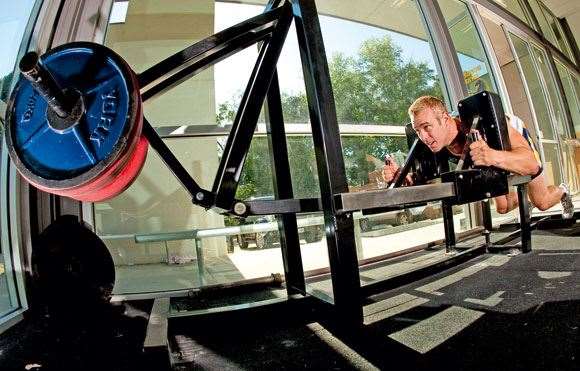 Building power is vital come season kick-off. Images: Stefan Postles
Building power is vital come season kick-off. Images: Stefan PostlesStaying loose
“For recovery we use anything from ice baths to massages to stretching. The Brumbies have masseuses coming in twice a week and I try to get at least an hour a week on the bench, similar on the physio table. It’s all about working out your tightness. And, of course, recovering from weights has a lot to do with supplement taking as well. Your body has to heal from the load you’ve just put it under and that’s where supplements help.“When you’re doing a lot of weights, the flexibility of your gluts and your hamstrings really decreases. Generally, if you’re going to do an injury to yourself, it’s mainly as a result of tight gluts and hammies. So before the session there’ll be a quick stretch and after the session there’ll be a warm-down followed by another stretch.”
The scales say ...
“Obviously in the pre-season my workload is a lot higher, so it comes back to the old equation: if you’re going to build weight, your calories in have got to be higher than your calories out. But during the season, where the training backs off and I need to feel recovered, I taper my calories off, so the in and out is roughly equal. Some blokes, on the other hand, need to reduce their skinnies (skin folds), so their calories in are less than the calories out. It sounds very technical, but realistically – if you’re smart with what you eat and you’re aware of your training loads and what’s required on the park – you can generally work your nutrition quite easily.“I couldn’t give you my specific calorie intakes, but during the pre-season, with all the protein drinks and the supplements, I might be punching around five meals a day into my body. That sounds a lot, but in saying that, I’m burning a hell of a lot of that off.“The only issue I have with my weight is that I’ve got a specifically designated playing weight that really does dictate how I perform. If I’m heavier than 115kg going into a game, I’ll generally feel like I’m lagging on the field. So that mean weight for me – where I like to train and play at – is somewhere between 113-115kg. That’s ideal. In the pre-season, where I’m in a muscle-building phase, I’ll obviously go over 115kg. It’s just a matter of timing; when I hit the season, I also hit my premium playing weight.”
– Aaron Scott
Related Articles
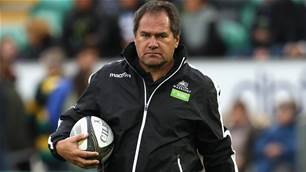
'Massive coup' as Kiwi to coach Wallabies
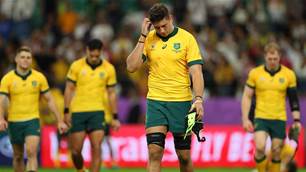
Battered Wallabies seek answers
